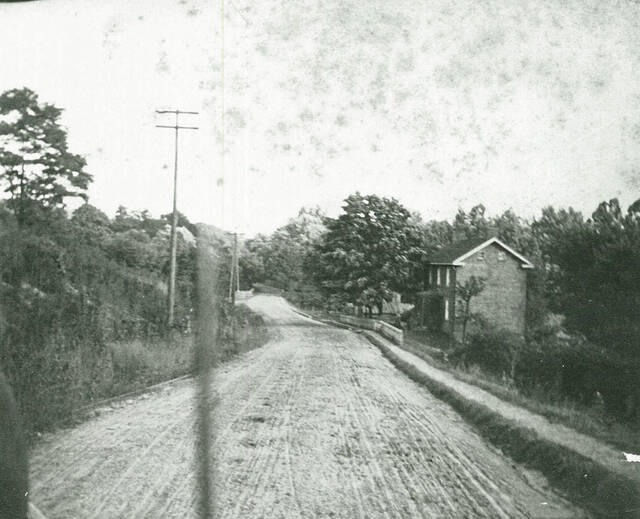https://triblive.com/local/sewickley/op-ed-what-does-our-cultural-landscape-say-about-us/
Op-ed: What does our cultural landscape say about us?

At first glance, a single building within a community may suggest a random or isolated structure, but under broader scrutiny, a more robust story can emerge, revealing layers of history far beyond what the initial glance suggested.
At the intersection of Beaver Road and Village Drive is an important fact, perhaps not commonly known – two significant properties still stand that contributed to the history and development of the Sewickley Valley and the story of Beaver Road as a vital transportation artery critical to regional trade and travel. Known as the Blacksmith’s House (built 1823) and the Miller’s house (built 1856), these structures were important components of a significant 19th century estate known as Newington.
While this house was designated a National Historic Landmark in 1975 for its exemplary Federal-style architecture, the Newington estate and its ancillary structures reveal a larger story of the development of the Sewickley Valley, and of a pioneer family at the center of the region’s economic and social development.
The original tract of land granted in 1786 to Major Daniel Leet as depreciated pay for service in the Revolutionary War (he fought with George Washington at the Battle of Trenton and at Valley Forge) encompassed 200 acres stretching from the Ohio River to the inland hills and beyond, including the Little Sewickley Creek, (lacking funds, the newly formed U.S. government routinely paid military personnel by granting tracts of land, known as depreciation land). The property was passed to David Shields and Eliza Leet Shields (daughter of Daniel), who with the help of their descendants, developed a dynamic 19th-century working estate with multiple structures serving different roles, some of which still stand today.
The Blacksmith’s residence (currently located at the corner of Beaver Road and Village Drive) is a red, painted brick home with the original blacksmith shop built of wood and situated directly behind the Miller’s residence (located across the street next to Little Sewickley Creek). It is site-specific due to the need for hydropower and also made of brick.
Recounted by Agnes Hays Gormly in “Sewickley: A History of a Valley Community” by Frances C. Hardie, “Here real plantation life was led, for Mr. Shields built not only the large mansion but had established large barns, a grist mill, blacksmith shop and a tavern, all of which served those living in the area or those who traveled the highway, also known as Beaver Road. The grist mill was the largest in the surrounding area and served the neighborhood to turn their grain into flour and meal.”
Like the elegant main house at Newington, the Blacksmith’s House reflects the Federal style of architecture, but from an understated perspective. Like all brick structures of this era, the clay used for the bricks was sourced and fired on-site, along with the milling of timber used for roof and floor structures. This was a common practice prior to the development of railroads and the interstate transport of supplies.
Due to the estate’s location along Beaver Road, Newington was a bustling rural enterprise, a vital source of supplies and communication for pioneer residents as well as travelers between Pittsburgh and Beaver. David Shields served as the first postmaster for the Sewickley Valley (1824-1857) as well as running a general store all from his home. He also worked as a business agent with the Harmonist Society; located downriver in the newly formed Economy village, the Harmonist Society produced more than $1.5 million in trade before 1843 and served as an example to the aspiring business community of Sewickley. Later in the 19th century, the Shields family actively participated in the underground railroad by assisting escaped slaves and openly supported the Union army during the Civil War, exemplified by two grandsons fighting for the North.
Also, part of the small yet thriving network is the house of John Way believed to be the first brick house built between Pittsburgh and Beaver (in 1810). A business enterprise, John and his wife Mary Ann ran what was known as the Way Tavern until around 1838, when the house was occupied by William Nevin and John Champ, remaking the Inn into the very first Sewickley Academy. These buildings, along with the nearby Lark Inn on Beaver Road, collectively tell the story of a developing transportation network as well as the patterns and principles of life during the earliest days of our community.
Throughout the early 20th century, the Newington estate remained in the family, yet its 200 acres were gradually parceled off and developed. What remains today are some of the original 19th-century buildings and the stories that connect the past to the present.
What does our cultural landscape say about us? The mission of the Sewickley Valley Historical Society is to promote interest in and to record, collect, preserve, and document the history of the Sewickley Valley. In light of the recent acquisition of the Blacksmith’s house by Sewickley Academy, “Because of its proximity to the athletic fields,” the Architecture Committee of the SVHS encourages a broader view of the community and this very historic neighborhood through the lens of education, balancing our shared history with meaningful and sensitive change.
Copyright ©2025— Trib Total Media, LLC (TribLIVE.com)
